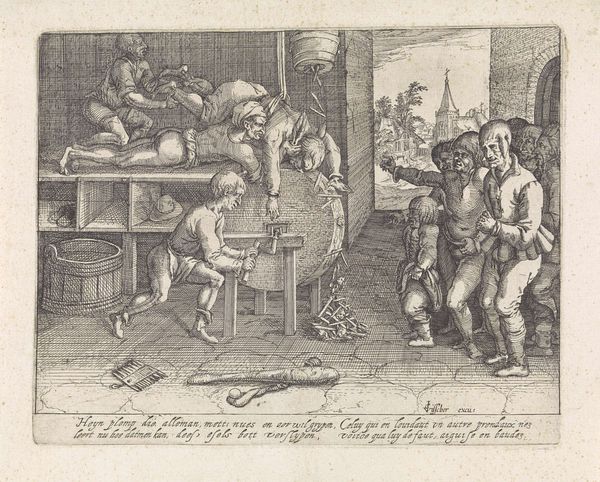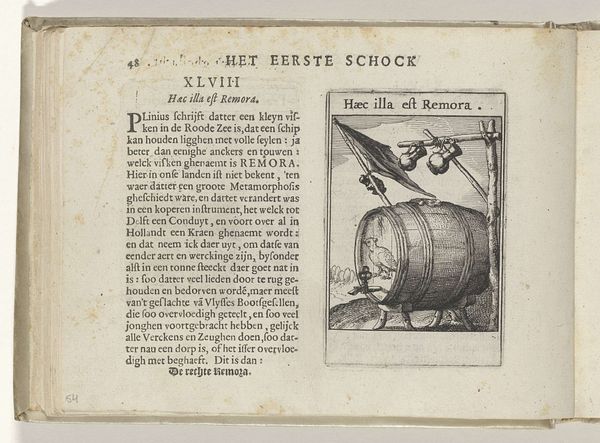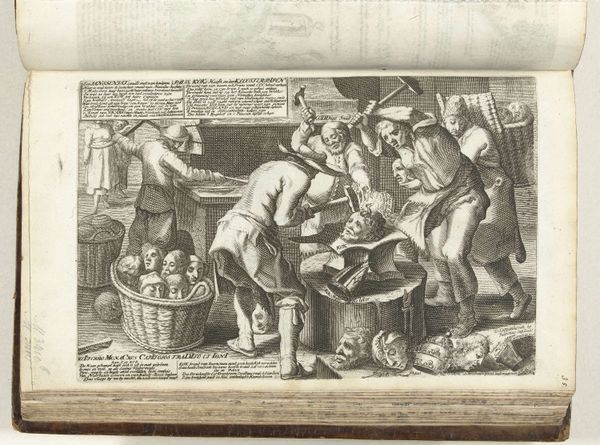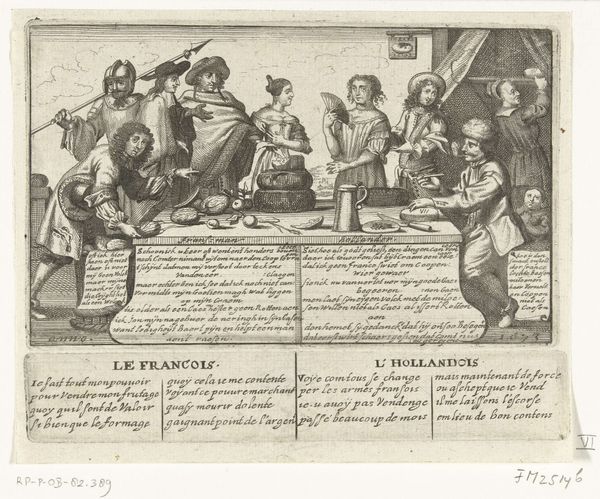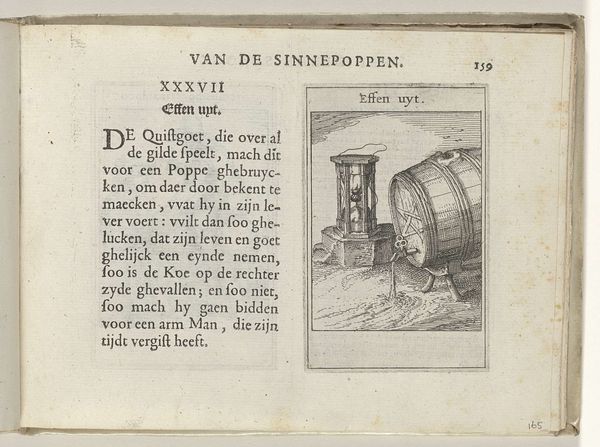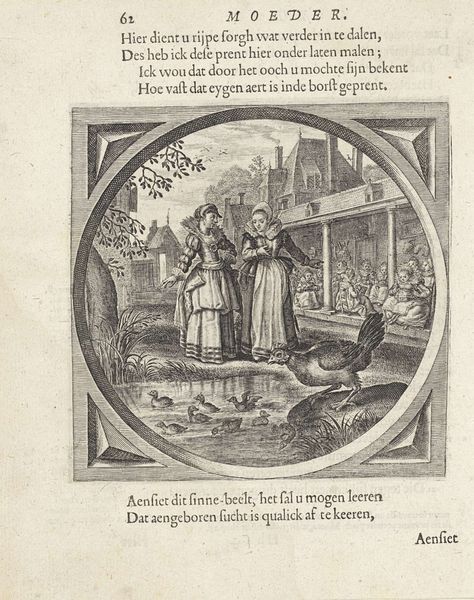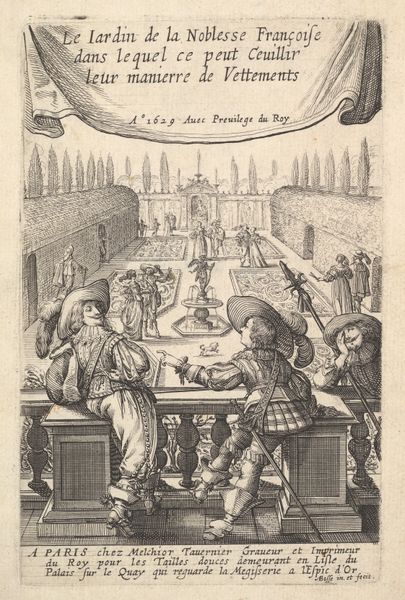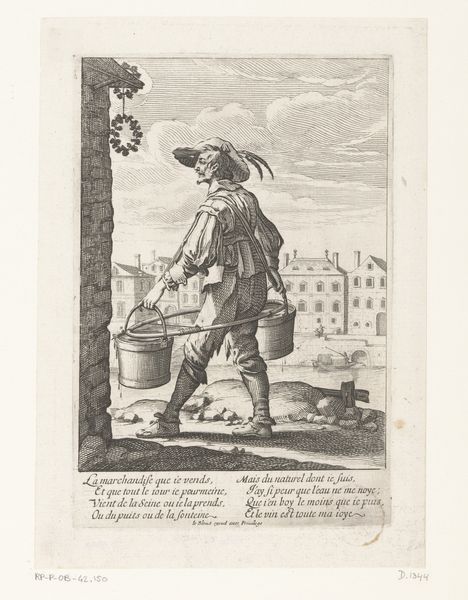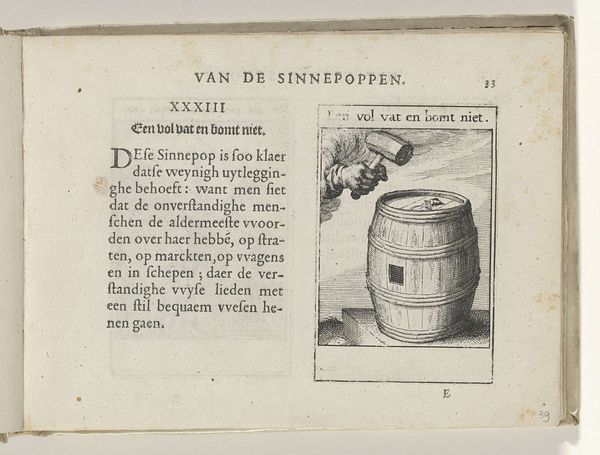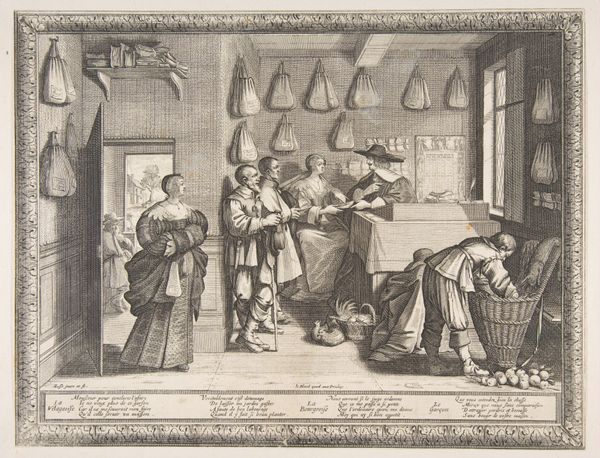
print, etching, engraving
# print
#
etching
#
genre-painting
#
academic-art
#
engraving
Dimensions: height 200 mm, width 315 mm
Copyright: Rijks Museum: Open Domain
Curator: Abraham Allard created this engraving and etching in 1713, titled "De vreedzame kopster," or "The Peaceful Cupper." You can currently find it here at the Rijksmuseum. Editor: My first impression is...unsettling, despite the word "peaceful" in the title. The woman being bled looks far from relaxed, quite distressed, in fact! And everyone is very stout. Curator: Indeed. Bloodletting was thought to cure a variety of ailments back then, though perhaps not a fear of the procedure itself. The figures are rendered in a style echoing popular genre paintings. See how it offers a window into the quotidian social structure and medical practices of the time? This image reflects the intersection of cultural beliefs and practices that defined the early 18th century in the Netherlands. Editor: The central figure wielding the razor wears that peculiar hat that feels almost symbolic in its own right. The act of bloodletting has been seen across cultures, often carrying symbolic associations beyond mere physical healing. Do you feel like that headgear elevates this cutter figure into a more authoritative, quasi-religious healer? Curator: It is tempting to see the imposing cylindrical headgear as some sort of ritual object, yes. Although, the explanations, titled both "Explication" and "Verklaaring", do suggest the bloodletting aims to cure. Notice the detail in the room, filled with strange medical tools—and the presence of onlookers? Such public engagement highlights how deeply intertwined such remedies were within social life. Editor: Absolutely, I see how this intimate act is also quite communal. The imagery used to both demonstrate the treatment and assuage fear really encapsulates its historical position and the era's complex relationship with both medical treatment and authority figures. Curator: Well said. Seeing medical history illustrated so vividly offers a powerful insight into a time very different from our own, and it reminds us of how cultural beliefs shape everyday practice. Editor: It's quite the cultural commentary piece that's really stuck with me and I can't help but wonder what current practices will one day seem as quaint as this.
Comments
No comments
Be the first to comment and join the conversation on the ultimate creative platform.

